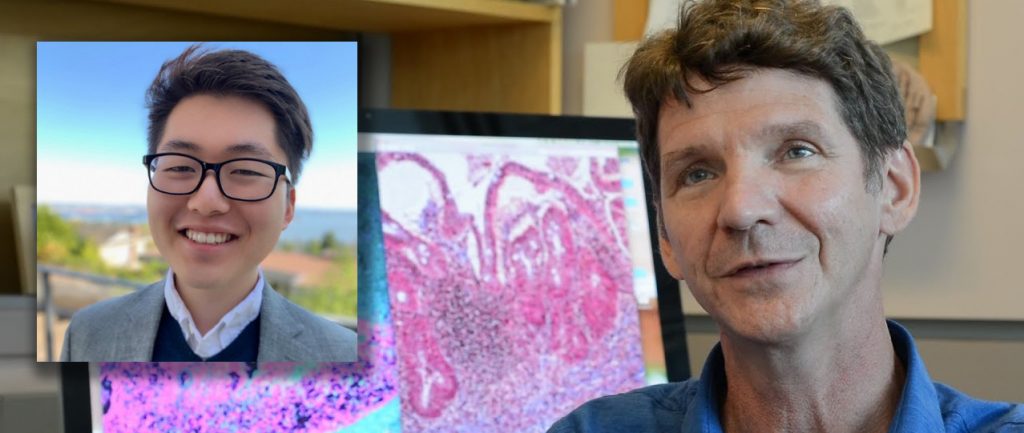AllerGen research gives new insight into recently discovered immune cells


Photo: Dr. Kelly McNagny; inset: Samuel Shin.
New research by AllerGen investigators at The University of British Columbia (UBC) has shed light on the development of innate lymphoid cells (ILCs) – a recently discovered set of immune cells that are on the front lines of the body’s response to infection and injury.
“ILCs play a key role in the initiation of allergic responses, so it is critical that we better understand where these cells are formed and how they colonize tissues,” says lead researcher Dr. Kelly McNagny, a professor of Medical Genetics in the School of Biomedical Engineering at UBC’s Biomedical Research Centre. “This knowledge will help us to develop new therapeutic approaches to preventing allergies.”
The study was published in the journal Blood Advances in November 2020.
Unlike other immune cells, such as T cells, ILCs do not have specific antigen receptors that help them recognize and fight a particular pathogen. Instead, ILCs are activated by a variety of molecular signals and respond immediately to almost any infection or tissue damage.
Despite their importance, little is known about how ILCs are produced. Current models suggest that they develop from bone marrow stem cells, mature in the bone marrow alongside other blood cell precursors, and then leave the bone marrow to populate tissues and organs throughout the body, particularly barrier tissues such as the skin, lungs and intestine.
To investigate ILC development, the McNagny lab looked at type 2 ILCs (ILC2s) – a subset of ILCs with an important role in mucosal immunology and allergic lung disease. The team found that instead of developing in the adult bone marrow, ILC2s carry a T cell-specific signature suggesting they mature in the thymus – a small organ located just below the breastbone that is known to be where T cells originate. They also hint that ILC development might occur around the time of birth and not in adulthood as previously thought.
“These findings were highly surprising and rewrite the life story of ILC development,’’ says the paper’s first author Samuel Shin, a Master of Science (Experimental Medicine) student at UBC. “The thymus is normally the realm of T cell maturation, so this leads us to believe that ILCs develop as an offshoot of neonatal T cell development.”
The team further observed that in the thymus, ILC2s attempt to “rearrange” their T cell receptor (TCR) genes, which is the first step in T cell development. “Most of these attempts are unsuccessful, which means that ILCs never become functioning T cells,” adds Shin.
Dr. Michael Hughes, a Research Associate in the McNagny lab, comments: “Sam’s work suggests that ILCs and T cells share a common developmental pathway at the time of birth and that ILCs are a result of failed T cell development.”
“ILCs appear to bridge the gap between innate and adaptive immune responses, and this knowledge provides us with a framework for better understanding when and how to isolate and manipulate these cells for future therapies to treat human disease,” adds Dr. McNagny.
The study was funded by the Allergy, Genes and Environment (AllerGen) Network, a Networks of Centres of Excellence (2004-2019), and the Canadian Institutes of Health Research (CIHR). Dr. McNagny was the Associate Scientific Director of AllerGen from 2016 to 2019.
